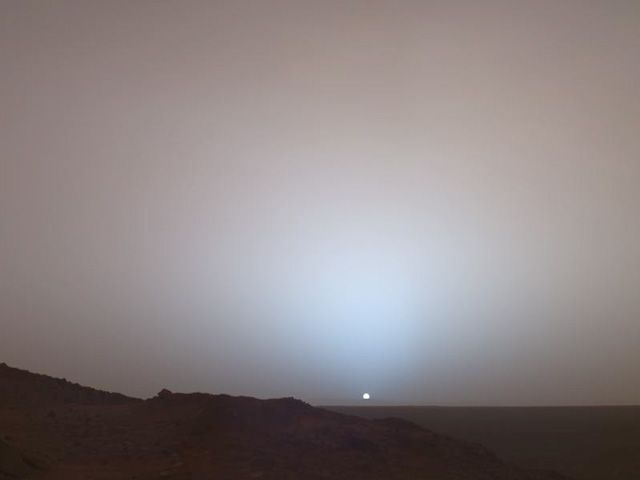Sunset Over Gusev Crater
What would it be like to see a sunset on Mars?
To help find out, the
robotic rover Spirit was deployed last month
to park and serenely watch the Sun dip below the distant lip of
Gusev crater.
It was a tough job, but some robot had to do it.
Now on Earth a red sunset is caused by two effects -- by blue light being
preferentially scattered out of sunlight by
oxygen and
nitrogen molecules in the atmosphere,
and by scattering off a small amount of impurities like
volcanic dust.
(The magnitude of the first effect was computed in one of Albert
Einstein's most cited
papers.)
Although Mars lacks oxygen and nitrogen, it is covered in
red dust frequently
hoisted into the atmosphere by
fast but
thin winds.
Analyses of images like the
above photograph show that at least some
Martian days are capped by a
sunset significantly
longer and redder than typical on Earth.
For up to two hours after twilight, sunlight continued to reflect off
Martian dust high in the atmosphere, casting a diffuse glow.
The result helps atmospheric scientists understand not only the
atmosphere of Mars, but atmospheres across the
Solar System,
including our
home Earth.





